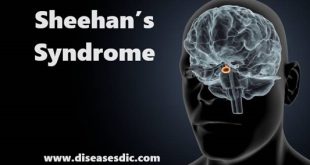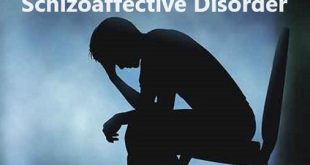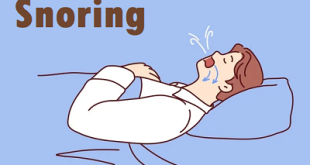Definition
Sleepwalking, also called somnambulism, a behavioral disorder of sleep in which a person sits up and performs various motor actions, such as standing, walking about, talking, eating, screaming, dressing, going to the bathroom, or even leaving the house. The episode usually ends with the sleepwalker’s returning to sleep, with no subsequent memory of the episode.
The individual goes from slight drowsiness to deep sleep in a normal sleep cycle. He or she usually experiences a few rounds of non-REM and REM sleep or rapid eye movement sleep. During deeper REM sleep the eyes move rapidly and the individual dreams vividly. Sleepwalking, however, mostly occurs earlier in the cycle during non-REM sleep; sometimes it can closer to the morning hours nearing wakefulness.
The sleepwalker is really asleep when he or she sits up, gets up, and walks about. Sometimes the individual uses the bathroom, gets dressed, moves furniture, or even drives a car, all while asleep. The sleepwalking can last just seconds, or 30 minutes or more. It is not normally harmful to wake the person, and the individual may feel disoriented when he or she wakes. However, there have been incidents of violence and screaming associated with sleepwalking.
Prevalence
Sleepwalking is more common in children, most likely because people experience less N3 sleep as they grow older, according to the National Institutes of Health.
According to The Lancet Neurology review, the prevalence of sleepwalking rises and falls throughout childhood. Sleepwalking affects:
- 3 percent of toddlers between 2.5 and 4 years old
- 11 percent of 7- to 8-year-olds
- 13.5 percent of 10-year-olds
- 12.7 percent of 12-year-olds
The rate of sleepwalking then rapidly drops in adolescence. Only about 2 to 4 percent of adults sleepwalk.
Type of sleepwalking
Sleepwalking can differ slightly depending on when it occurs at night:
Deep sleep sleepwalking: This is the most common type of sleepwalking and occurs while you are engaged in a deep sleep. It happens later in the evening or in the early morning. People usually have no memory of this type of sleepwalking.
Light sleep sleepwalking: In rarer instances, people sleepwalk in the lighter sleep stages. This happens within a few hours of falling asleep. They may be partially awake during the episode.
Causes of sleepwalking
There’s no one clear-cut reason why people sleepwalk, but several factors can influence its occurrence:
Genetics: Like most other disorders and diseases, sleepwalking can run in families. Identical twins frequently sleepwalk, and you’re ten times more likely to do it if a first-degree relative also does.
Environmental Triggers: Insufficient sleep is a common catalyst for sleepwalking. But an inconsistent sleep schedule can boost your risk, as can stress and alcohol. These are just more reasons to practice good sleep hygiene!
Medical Conditions: Many ailments can make you more prone to sleepwalking, including irregular heartbeats, reflux, sleep apnea, post-traumatic stress disorder, panic attacks, and asthma.
Sleepwalking can also be linked to Parkinson’s, Alzheimer’s, as well as seizure disorders. If you have recently started ambling about while you snooze, it’s wise to consult your doctor.
Sleepwalking risk factors
There are many factors which can increase your risk of sleepwalking. Eighty percent of sleepwalkers have at least one family member affected by sleepwalking or sleep, terrors.
- People with certain mental health and substance use disorders, such as obsessive-compulsive disorder (OCD), major depressive disorder, other anxiety disorders, and alcohol use disorder, are also more likely to sleepwalk.
- Taking medications such as antidepressants, selective serotonin reuptake inhibitors (SSRIs), over-the-counter sleep medications, or certain sleep-hypnotic medications can also increase the risk of sleepwalking for people who are predisposed to the behavior.
- Men and women are equally likely to sleepwalk, but the risk of the condition does decrease as you get older.
- If you have another sleep disorder such as sleep apnea, circadian rhythm sleep disorder, or insomnia disorder, you’re also more likely to sleepwalk.
- Avoid sleep deprivation and aim for more than seven hours of sleep a night on average to reduce your risk. Also do what you can to control your environment so that you are not frequently woken up by noise, light or pets throughout the night.
- Incorporating healthy and relaxing activities that reduce stress can also decrease your risk of sleepwalking.
Complications of sleepwalking
Sleepwalking itself isn’t necessarily a concern, but a person who sleepwalks can:
- Hurt themselves- especially if they walk near furniture or stairs, wander outdoors, drive a car or eat something inappropriate during a sleepwalking episode
- Experience prolonged sleep disruption, which can lead to excessive daytime sleepiness and possible school or behavior issues
- Be embarrassed or experience problems with social relationships
- Disturb others’ sleep
- Rarely, injure someone else nearby
Sleepwalking symptoms
When people sleepwalk, they may sit up and look as though they are awake when they are actually asleep. They may get up and walk around. Or they do complex activities such as moving furniture, going to the bathroom, and dressing or undressing. Some people even drive a car while they are asleep.
The episode can be very brief (a few seconds or minutes) or it can last for 30 minutes or longer. Most episodes last for less than 10 minutes. If they are not disturbed, sleepwalkers will go back to sleep. But they may fall asleep in a different or even unusual place.
Symptoms of sleepwalking include:
- Acting confused or disoriented when the person wakes up
- Aggressive behavior when woken up by someone else
- Having a blank look on the face
- Opening eyes during sleep
- Not remembering the sleepwalking episode when they wake up
- Performing detailed activity of any type during sleep
- Sitting up and appearing awake during sleep
- Talking during sleep and saying things that do not make sense
- Walking during sleep
Walking during sleep
Diagnosis and test
Usually, no exams and tests are necessary. However, a medical evaluation may be completed to rule out medical causes of sleepwalking. Additionally, one may get a psychologic evaluation done to determine whether excessive stress or anxiety is the cause of sleepwalking.
Sleep study tests may be done in persons in whom the diagnosis is still unclear.
Differential Diagnosis
Sleepwalking, night terrors, and confusional arousals are all common non-REM sleep disorders that tend to overlap in some of their symptoms. A percentage of young children through mid-adolescence will experience some or all of these behaviors.
Night terrors
Like sleepwalking, night terrors tend to occur during the first half of a night’s sleep, often within 30-90 minutes from falling asleep. Also, like sleepwalking, night terrors occur during stage 3 sleep. However, unlike sleepwalking, an individual with night terrors will portray sudden and often agitated arousal that may appear to parents as violent and terrifying behaviors. Night terrors often start during the toddler years with a peak incidence between 5–7 years of age. During these times, evidence of a surge in autonomic nervous system activity is evident. Accelerated heart and respiratory rates, dilated pupils, and sweating is characteristic. Triggers for night terrors may include sleep deprivation, stress, or medications (stimulants, sedatives, antihistamines, etc.). Unlike sleepwalking, episodes of night terrors may recur for several weeks in a row, abate completely, and later return.
Confusional arousals
Similar to night terrors, confusional arousals are characterized by a sudden and violent arousal from sleep with behaviors described as agitated and semi-purposeful in the pattern. Speech is generally coherent (unlike in sleepwalking). A distinguishing point between night terrors and confusional arousals is the lack of autonomic nervous system phenomena in the latter. Confusional arousals tend to occur during the first half of a night’s sleep (during stage 3). They are characteristically short-lived, lasting only 5 – 30 minutes in duration. Affected individuals typically have no memory of the event.
Nocturnal seizures
Several important differential points help delineate the above three sleep behaviors from seizure activity that occurs at night. Seizures by their nature are very brief, lasting often only a few minutes. In addition, seizure events likely to be confused with the above are characterized by a series of repeated, stereotypical, and frequent behaviors occurring in clusters. Importantly, seizures more commonly occur in the second half of the night’s sleep. Patients often have post-ictal (post-seizure) issues including headache, extreme grogginess, being hard to arouse, as well as incontinence of urine and stool. To assist in establishing a correct diagnosis a neurologist may perform a video-EEG study to help clarify the issue.
Treatment of sleepwalking
Medical treatments
Sleepwalking may be associated with an underlying medical condition, for example, gastroesophageal reflux disease (GERD), obstructive sleep apnea, periodic leg movements (restless leg syndrome), or seizures. To help prevent sleepwalking, the underlying medical conditions should be treated.
Medications for the treatment of sleepwalking disorder may be necessary in the following situations:
when the possibility of injury is real;
when continued behaviors are causing significant family disruption or excessive daytime sleepiness; and when other measures have proven to be inadequate.
Medications
Benzodiazepines, such as estazolam (ProSom), or tricyclic antidepressants, such as trazodone (Desyrel), have been shown to be useful. Clonazepam (Klonopin) in low doses before bedtime and continued for three to 6 weeks is usually effective.
Medication can often be discontinued after three to 5 weeks without recurrence of symptoms. Occasionally, the frequency of episodes increases briefly after discontinuing the medication.
Other remedies
- Relaxation techniques, mental imagery, and anticipatory awakenings are preferred for long-term treatment of persons with the sleepwalking disorder.
- Relaxation and mental imagery should be undertaken only with the help of an experienced behavioral therapist or hypnotist.
- Anticipatory awakenings consist of waking the child or person approximately 15-20 minutes before the usual time of an event and then keeping him or her awake through the time during which the episodes usually occur.
Sleepwalking Home Remedies
A person who has a sleepwalking disorder can take the following measures:
- get adequate sleep;
- meditate or do relaxation exercises;
- avoid any kind of stimuli (auditory or visual) prior to bedtime;
- keep a safe sleeping environment, free of harmful or sharp objects;
- sleep in a bedroom on the ground floor if possible, to prevent falls and avoid bunk beds;
- lock the doors and windows;
- remove obstacles in the room, tripping over toys or objects is a potential hazard;
- cover glass windows with heavy drapes; and
- place an alarm or bell on the bedroom door and if necessary, on any windows.
Prevention of sleepwalking
Children are more likely to sleepwalk or experience sleep terrors when they are overtired or anxious. Provide a relaxing bedtime routine for your child. Follow it up with an early bedtime to help prevent sleep disturbances.
Avoid sleepwalking injuries by making the bedroom and house as safe as possible. Consider the following precautions:
- Don’t let the child sleep in a bunk bed
- Make sure there are no sharp or breakable objects near the bed
- Install gates on stairways
- Lock doors and windows
 Diseases Treatments Dictionary This is complete solution to read all diseases treatments Which covers Prevention, Causes, Symptoms, Medical Terms, Drugs, Prescription, Natural Remedies with cures and Treatments. Most of the common diseases were listed in names, split with categories.
Diseases Treatments Dictionary This is complete solution to read all diseases treatments Which covers Prevention, Causes, Symptoms, Medical Terms, Drugs, Prescription, Natural Remedies with cures and Treatments. Most of the common diseases were listed in names, split with categories.








how can you prevent sleepwalking?
There is no known way to absolutely prevent sleepwalking; however, certain steps can be taken to minimize one’s risk. These include:
Get adequate sleep.
Limit stress. Meditate or do relaxation exercises.
Avoid any kind of stimulation (auditory or visual) prior to bedtime.
Please,is the person aware of what he or she is doing when sleep walking?
The person is not conscious and aware that he/she is walking.
I was used to have sleepwalk when I was 8 or 9 years old. but now it is naturally finished.i don’t sleep walk anymore .